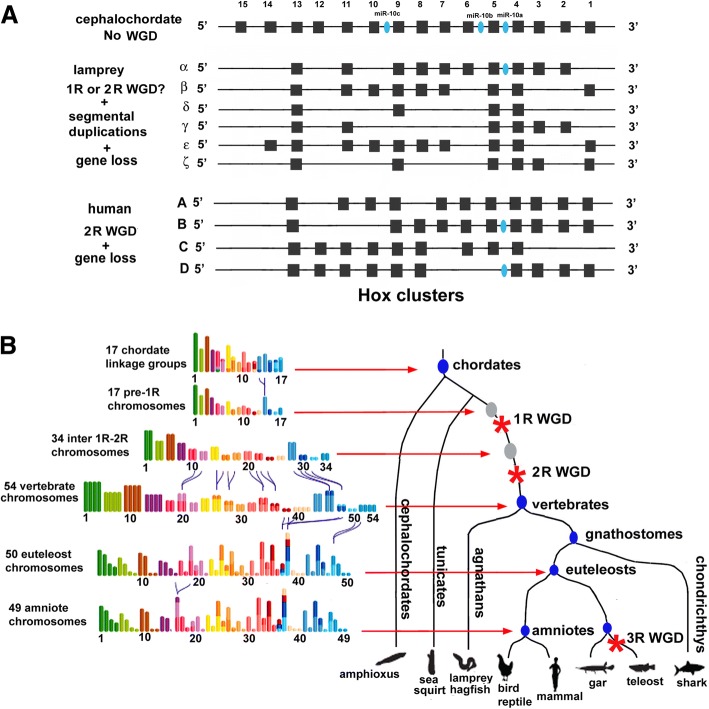Fig. 1.
When did the second whole genome duplication (WGD) occur in chordates? a. After [4, 8]. Duplications of Hox clusters in lampreys and humans are consistent with a single WGD at the base of the vertebrates and a second WGD before gnathostomes evolved. However, the six Hox clusters in agnathans (lampreys and hagfish) are consistent both with WGD at the base of the vertebrates plus duplications of chromosomal segments, together with independent duplications and losses of individual genes, or with two WGDs at the base of the vertebrates plus segmental duplications and individual gene gains and losses. b. Adapted from Fig. 5 in [5]. The scheme of chromosome evolution in invertebrate chordates (cephalochordates and tunicates) and vertebrates. In this scheme, the ancestral chordate had seventeen chromosomes as deduced from synteny between the amphioxus and vertebrate genomes [9]. Subsequent to one WGD, a second WGD plus chromosomal fusions (indicated by curved lines) resulted in 54 chromosomes at the base of the vertebrates. Additional chromosome fusions occurred in the lineages leading to euteleostomes (bony vertebrates) and amniotes. A third WGD occurred in the teleost lineage. The heights of the bars representing chromosomes or linkage groups are in proportion to the number of genes located in each one. The colors correspond to those of the 17 pre-1R chromosomes. The size of the colored segments is proportional to the number of genes in each one

